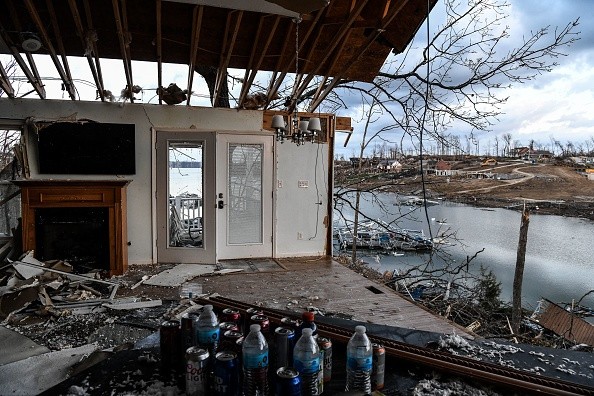When a tornado approaches, most of us no longer listen for a tornado siren; instead, we listen for the screaming sounds or buzz of our telephones.
Even as meteorologists, we rely on apps and notifications to tell us when a storm is approaching.
Unfortunately, such communications were delayed last weekend.
Last Saturday, March 5, when devastating tornadoes ripped across the state of Iowa, homeowners in danger had no idea their warnings had been delayed.
The National Weather Service determined that the tornado that decimated Madison County, Iowa, on Saturday was an EF4, making it the strongest tornado to hit the Hawkeye State since 2013, and the deadliest since 2008.
Tornadoes are graded on a 0-to-5 Enhanced Fujita (EF) scale depending on the amount of damage they produce.
Seven people are dead due to the tornado

Officials said Sunday, March 6, that at least seven people were killed, two of whom were children under the age of five after multiple tornadoes swept across central and southwest Iowa on Saturday.
Six of the fatalities occurred in Madison County, which is located just southwest of Des Moines, and included some of the storm's youngest victims, according to Madison County Emergency Management Director Diogenes Ayala via the Washington Post.
Four other individuals were hurt, he added, including one who was transported to the hospital with life-threatening injuries.
According to county officials, one person was killed in rural Lucas County while living in a destroyed camper.
A NWS statement issued Monday afternoon, March 7, the communications outage was caused by a broken fiber optic cable serving the Dallas-Ft. Forecasting office in Worth, as per CNN.
Because of the cable interruption, that office switched from its primary, land-based communication system to a backup satellite-based network that services all NWS field offices.
The increased volume of messages coming to the central message handler from NWS Central Region offices, along with the technical specifications of the satellite network in use at a co-located site, delayed the queue of message transmissions and generated a momentary backlog across numerous offices.
The strongest tornado formed in the United States
While March has traditionally witnessed several notorious twisters in the United States, many of them occur further south of Iowa or at the end of the month.
This is because tornadoes require warm, moist air to develop, which is normally difficult to locate in the Midwest this early in the season.
In the United States, reasonably credible tornado records date back to 1880.
Before March 6, only two "violent" tornadoes with ratings of at least four on the Fujita/Enhanced Fujita scale have been documented north of 40 degrees latitude.
On February 18, 1992, an F4 hit Ohio, and on January 24, 1967, another traveled from Missouri into Iowa.
However, Saturday's tornado was around 1 degree north of each of those twisters.
The evolution of storms
Saturday's environment was marked by high levels of spin but low levels of instability, or "juice" for storminess.
Temperatures in the 60s and a touch of humidity were delivered by southerly breezes preceding a zone of low pressure.
While this would not normally have resulted in particularly strong storms, the exceptional change in wind speed and direction with height meant that any clouds that grew tall enough were subjected to significant spin.
Related article: Recent Storm System Represents Future Multiple-Day Tornado Activity
© 2025 NatureWorldNews.com All rights reserved. Do not reproduce without permission.





